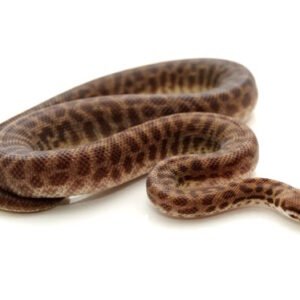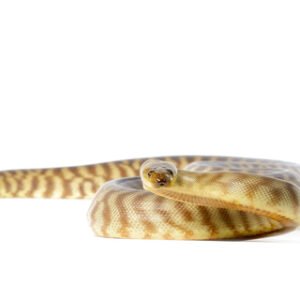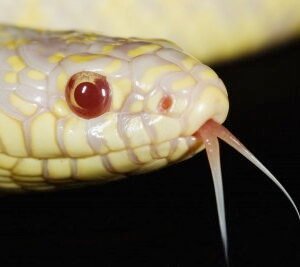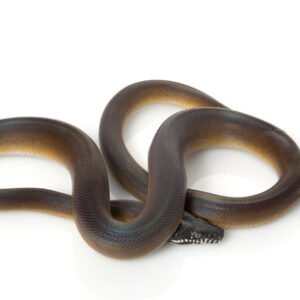All About the Western Hognose Snake: A Comprehensive Guide
Introduction to the Western Hognose Snake
The Western Hognose Snake (Heterodon nasicus) is a non-venomous colubrid species that captivates both reptile enthusiasts and casual observers alike due to its unique physical traits and intriguing behavior. This snake is native to the North American regions, notably central and western United States, with a geographical distribution that stretches from southeastern Canada down to eastern New Mexico. Its habitat typically comprises arid grasslands, sandy deserts, and open woodlands, where it thrives amidst diverse environmental conditions.
One of the most distinctive features of the Western Hognose Snake is its upturned snout, which not only aids in burrowing but also contributes to its charming appearance. The coloration of this species varies significantly, often presenting a palette of browns, ochres, and grays, adorned with darker bands or spots that provide effective camouflage against predators and in their native habitat. The variability in coloration and patterning enhances its appeal among reptile keepers, as each individual can exhibit a range of aesthetically pleasing traits.
Behaviorally, the Western Hognose Snake is known for its docile temperament, making it an excellent choice for both novice and seasoned reptile keepers. Its tendency to display unique defensive behaviors, such as flattening its neck, hissing loudly, or even feigning death when threatened, adds a layer of fascination for those who study or keep this species. Unlike many other snakes, the Western Hognose is often observed to be quite curious and somewhat social, showcasing a personality that can endear it to enthusiasts and researchers alike. These factors combined have solidified the Western Hognose Snake’s standing as a prominent subject of interest in herpetology and the pet trade.
Habitat and Diet of the Western Hognose Snake
The Western Hognose Snake (Heterodon nasicus) is primarily found in a variety of environments, showcasing its adaptability to numerous habitats. Commonly located in the grasslands, forests, and desert regions of North America, this species prefers areas where the soil is sandy or loose, allowing for easier burrowing and camouflage. These habitats offer essential resources such as shelter, appropriate temperatures, and abundant prey, contributing to the overall survival of the Western Hognose Snake. The presence of shrubbery and ground cover is vital, as it provides both refuge from predators and suitable areas for hunting.
Dietary preferences of the Western Hognose Snake are particularly fascinating. This species is known for its unique feeding habits, primarily preying on toads. Unlike many other snakes that rely on a wide variety of prey, the Western Hognose has developed specialized adaptations, such as a wide, flat head to engulf its toad prey. The snake’s diet can also include small rodents and lizards, but toads remain its primary food source due to their abundance in its chosen habitats.
Hunting behavior is characterized by a combination of ambush tactics and active foraging. The Western Hognose often waits near burrows or areas frequented by toads, taking advantage of their predictable movements. Additionally, the snake employs a unique defensive strategy when threatened. Instead of using venom, it may flatten its neck, hiss, and even roll over, displaying a highly adapted behavior that can confuse potential threats. These remarkable traits enable the Western Hognose Snake not only to thrive in various environments but also to maintain a specialized diet that complements its habitat effectively.
Care and Feeding for Captive Western Hognose Snakes
When considering the care and feeding of Western Hognose snakes (Heterodon nasicus) in captivity, it is vital to understand their specific needs to ensure their health and well-being. Proper housing is one of the foremost aspects of snake care. A secure enclosure is necessary, ideally a terrarium that is at least 20 gallons in size. The enclosure should have a secure lid to prevent escapes, as these snakes are known for their climbing abilities. A hiding spot, such as a cave or a piece of driftwood, is also important, as it will help the snake feel safe and reduce stress.
Temperature and humidity control are other critical components. Western Hognose snakes thrive in a temperature gradient ranging from 75°F to 90°F, with a basking spot approximately 88°F to 92°F. This can be achieved using a heat mat or a basking lamp, allowing the snake to regulate its body temperature. Humidity levels should be maintained between 30% and 50%. Proper hydration must also be provided by ensuring a shallow water dish is available for the snake to drink and soak if desired.
Feeding practices are equally essential for the health of Western Hognose snakes. In captivity, these snakes typically consume appropriately sized rodents, such as pinky mice or fuzzy mice, depending on the snake’s size age. Young snakes may require feeding every 5 to 7 days, while adults can be fed every 10 to 14 days. It is crucial to avoid overfeeding, as obesity can lead to health complications. Monitoring the snake’s body condition and adjusting feeding frequency accordingly can help maintain its health. Offering prey that is prey items are thawed and warmed to body temperature can also stimulate feeding. By following these guidelines, owners can provide optimal care for their captive Western Hognose snakes, promoting a long and healthy life.
Common Health Issues and Tips for Maintaining a Healthy Western Hognose Snake
Western Hognose Snakes (Heterodon nasicus) are fascinating reptiles renowned for their unique behavior and distinctive appearance. However, like all pets, they can face various health issues, both in the wild and in captivity. Common health concerns include respiratory infections, mites, and scale rot. Respiratory infections may arise from inadequate humidity levels or exposure to cold temperatures, leading to sneezing, wheezing, or wheezing sounds. It is crucial to monitor your snake closely for such signs and take appropriate action, such as adjusting their environment to ensure they remain warm and moisture levels are adequate.
Mites are another prevalent concern for Western Hognose Snakes, affecting their overall well-being. These tiny parasites can cause stress, skin irritation, and even anemia if not addressed promptly. Regularly checking your snake for signs of mites—such as tiny black specks that resemble dirt on their skin—is essential. If you notice any infestation, seeking immediate veterinary treatment will help in effectively eliminating the issue.
Scale rot is a condition caused by bacterial or fungal infections, often resulting from prolonged exposure to moisture in an inappropriate habitat. Symptoms include swollen or discolored scales. To prevent scale rot, maintaining a clean and dry environment is imperative. Regularly clean the enclosure and ensure proper substrate to reduce excess moisture.
In addition, providing an adequately sized enclosure is vital for the snake’s well-being. Western Hognose Snakes require space to move comfortably, which promotes their physical and psychological health. A larger habitat with hiding spaces can significantly reduce stress, offering a more secure environment.
Ultimately, maintaining a healthy Western Hognose Snake involves regular health checks, a suitable habitat, and prompt action when health issues arise. These precautions can ensure a happy and thriving snake, enriching the bond between pet and owner.





